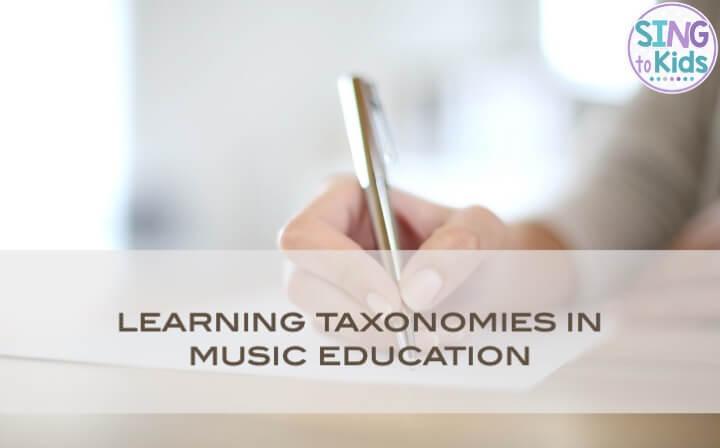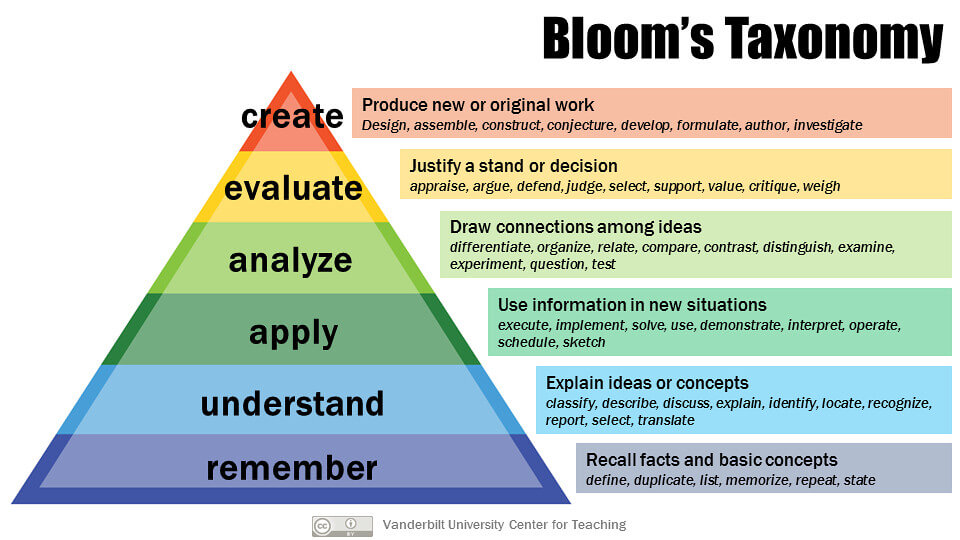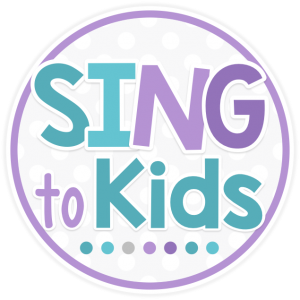This is my third and final part in a series on formal observations in music education. Part one, Formal Observations as a a Music Educator, offered practical tips to music teachers to help them to begin with the end in mind when it comes to their observations. Part two, An Administrators Guide to Observing Music Teachers, offered insight to principals about looking deeper in the music room when observing music educators. Part three, Learning Taxonomies in Music Education, helps teachers communicate more clearly about the rich learning that occurs in the music room on a daily basis.
What is a Learning Taxonomy?
So let’s start with the basics: What is a learning taxonomy. Simply, it’s a way to describe the kinds and types of learning that occur in your classroom. The oldest and most well known taxonomy is Bloom’s Taxonomy of Educational Objectives. Bloom’s taxonomy was then updated by Anderson & Krathwohl to demonstrate current educational practice. Many others have developed learning taxonomies, such as Fink, Wiggins & McTigue. Marzano, and Webb. No matter what learning taxonomy you know, what is important to understand is that each is attempting to capture a multidimensional approach to learning in which certain skills, knowledge and abilities, work to help students deepen their understanding of a topic.
Why are Learning Taxonomies Helpful?
Why are learning taxonomies so helpful in music? Because they help music educators to communicate what they do and why they do it with administrators, boards of education, and the community. When one looks at Bloom’s Taxonomy, it is easy to look at the structure and see its use in ELA or math. The reality is, we do the same in music on a daily basis but because the “what and how” we do things looks differently, it’s harder for us to make those connections when communicating with those outside of music.
The other thing that makes learning taxonomies helpful in the music room is that we can share not only the work we do in a given lesson, but we can share the goals for music instruction over a period of time. What I do in Kindergarten or First Grade may not appear to be “rigorous” in nature, but those musical experiences in K-1 (e.g. beat keeping, pitch matching, experiencing fast/slow, etc.) lay the foundation for later musical experiences in other grade levels. If I want to have depth of learning, I have to provide foundational activities that move students in the direction of deeper learning in later grades.
Connecting the Learning in Music
Let’s dig in using Bloom’s Revised Taxonomy as a basis for our work. I will tell you that I love Webb’s Depth of Knowledge a bit more for its simplicity and application to music instruction. I will also share that my district uses Marzano’s Taxonomy. The reality is that there is much overlap between the taxonomies and becoming knowledgable about taxonomies will only enhance how you deliver instruction to your students.
To help make connections to the kinds of instruction we offer in elementary music, I referenced the National Core Arts Standards as well as the Michigan Merit Curriculum Standards, Benchmarks, and Grade Level Content Expectations for K-5 Music.
Remember
With Remember (formerly knowledge), students rely upon memory to produce facts, lists, definitions, or retrieve information.
- Moving to a steady beat or macrobeat/microbeat
- Singing a song from memory
- Echoing tonal & rhythm patterns (neutral syllable or solfege)
- Performing resting tone
- Vocabulary around musical terminology (e.g. melody, form, dynamics, tempo, phrasing, articulation, etc.
- How to hold a mallet
- How to hold an instrument
- How to put an instrument together
- How to perform on an instrument
- Locating information on anchor charts or word walls
- Recalling and/or memorizing facts about instruments, pieces, composers
- Recognizing musical symbols (treble clef, staff, notes
- Knowing fingerings for an instrument
- Audiating a tonal or rhythm pattern (audiation can be applied at almost every level as it encompasses 8 types or ways we audiate music)
Understand
Students demonstrate Understand (formerly comprehension) by constructing meaning from different types of function, like identifying, labeling, and comparing/contrasting.
- Classifying instrument families
- Identifying and labeling macrobeat/microbeats.
- Labeling the resting tone
- Comparing/contrasting same/different tonal or rhythm patterns
- Identifying rhythm or tonal patterns in a song
- Comparing/contrasting instruments or pieces
- Explaining why a song is major/minor or duple/triple
- Predicting what may come next in a performance (harmonically, phrases, or form)
- Describe contrasting timbres or textures
- Identifying and labeling a variety of form: call & response, AB, ABA, ABACA, solo, chorus, verse & refrain, etc.
- Giving examples of rhythm patterns or tonal patterns
- Describing what you are hearing in a piece of music
- Identifying form or timbres
- Matching movement to music stylistically
- Describe how musical elements are found in all musics/cultures.
- Follow a conductor’s cues in an ensemble.
Applying
For Applying (formerly application), students use material learned to produce a product, like singing, chanting, moving, playing an instrument, performing in an ensemble.
- Performs (sing or play) a piece of music with proper technique
- Performs (sing or play) a piece of music with expressive elements (e.g. tempo, dynamics, phrasing)
- Performs instrument parts independently within an ensemble.
- Reads music notation (symbolic or notation)
- Reads music notation (symbolic or notation) and perform it fluently
- Sight read unfamiliar music
- Practice in small groups or independently
- Write familiar or unfamiliar tonal and rhythm patterns
- Performs an ostinato on an instrument
- Performs a bordun on an instrument
Analyze
With Analyze (formerly analysis), students break information into parts and determine how the parts are related to one another or to the whole.
- Categorizes timbre of non-pitched percussion.
- Identifies types of voices (whisper, speaking, male/female, etc.)
- Identifies patterns are same or different (basis for improvisation).
- Translates a tonal or rhythm pattern using solfege system.
- Identifies patterns within a piece of music and connect it to tonality/meter
- Identifies patterns within a piece of music and connect it to form.
- Identifies patterns within a piece of music and connect it to harmony.
- Distinguishes instrumental sounds from one another.
- Sequences familiar patterns in order (e.g. rhythm/melodic puzzles for songs.)
- Describes how music is used in daily life
Evaluate
Students demonstrate Evaluate (formerly evaluation) by using criteria or standards to make judgements or critique information.
- Listens critically to a piece and critique the performance
- Listens critically to one’s own performance and critique for improvement
- Rates a student performance
- Self-reflects and rate a personal performance
- Rates a student composition
- Self-reflects and rate a personal composition
- Describes an aesthetic response to music
- Explain why you made musical choices in a composition
- Explain why you made musical choices in improvisation.
- Predict what may occur next in a musical piece (e.g. form, harmony, etc.)
Create
For Create (formerly Synthesis), students put together information to form a new whole or reorganize elements into a new structure.
- Improvises a tonal or rhythm pattern in context
- Improvises interlude between performances of a song
- Improvises rhythms over chord roots
- Improvises melody over chord roots
- Creates melodic ostinati accompaniments
- Creates musical answers (melodic or rhythmic).
- Creates variations for a familiar song
- Create a song to demonstrate form (e,g. song with lyrics, AB, etc.)
- Creates musical responses to represent various musical styles
- Creating movement in response to a musical excerpt
- Creating movement to show form.
- Creates a tonal or rhythm pattern independently.
- Composes a song using audiation (without notation) for a classroom instrument.
- Composes a song using notation for a classroom instrument (e.g. xylophone, piano, recorder, drumming.)
- Arrange a short piece of music.
- Transcribe a piece a music from one “Do” signature to another or from Major to Minor tonality.
Final Thoughts
These lists are in no way meant to be an exhaustive collection of all the ways we engage students in deep, hierarchical learning in the elementary music classroom. Rather, the lists are meant to serve as a starting place for YOU to reflect upon your own practice and begin to understand all of the ways we engage students in music learning.
I think it’s also important to point out that in music, we are constantly circling back and accessing prior knowledge to build upon it with increasing difficulty. We may introduce basic rhythmic notation in Kindergarten, like quarter and eighth notes, but we spiral back in first grade adding more difficult rhythms, and again with each grade level, deepening their understanding and application of notation until they are able to read and perform it fluently.
I also think it very important not to dismiss the importance of Remember (formerly knowledge in Bloom’s Taxonomy). If you look at Standards-based grading, the first thing a student must know is the vocabulary around the standard. If a student knows the vocabulary, they can then begin to apply it and or move towards a greater understanding of it. If you are interested in knowing more about Standards-Based Assessment, please see my series on Assessment: Part 1, Part 2, and Part 3.
What are your thoughts around Learning Taxonomies in the Music Room? I’d love to hear your thoughts and perspectives! Leave me a comment below!
If you’re looking for music advocacy posters, David Row of Make Moments Matter, has a wonderful FREE resource called Blooms in the Music Rooms!





Connect with me!